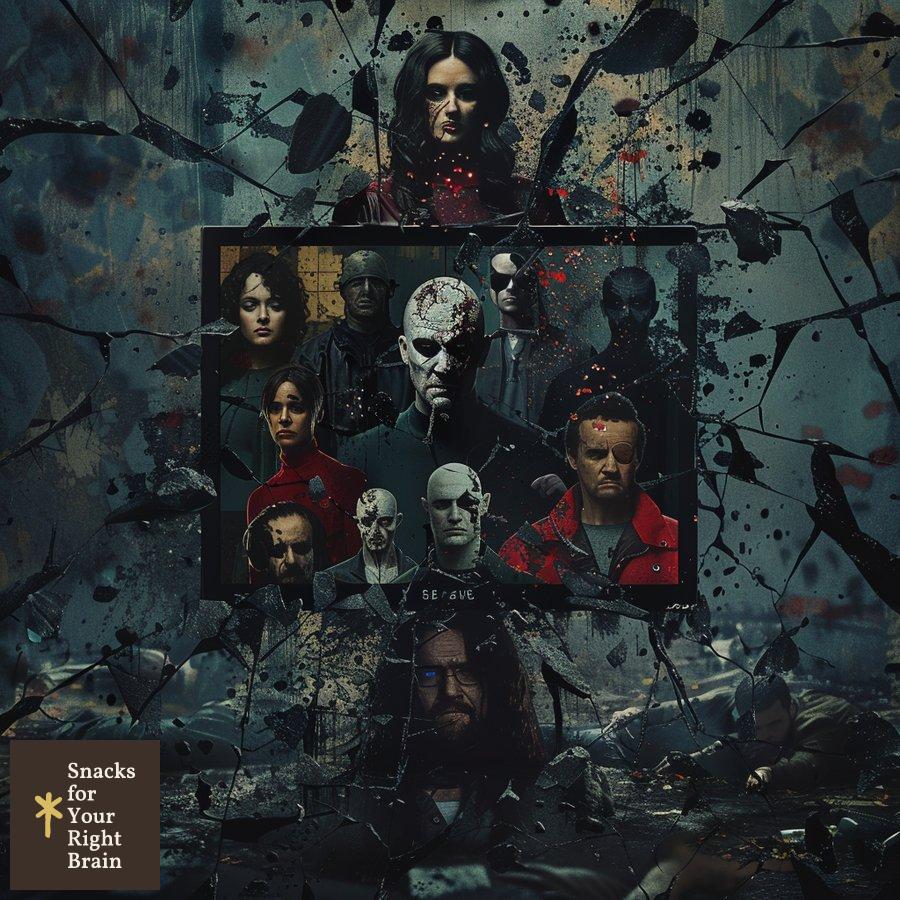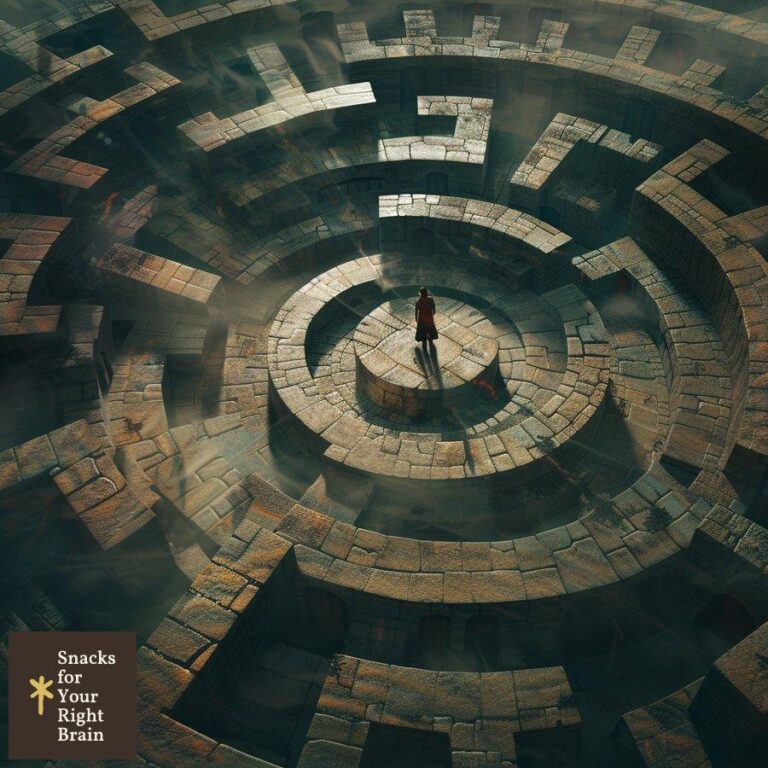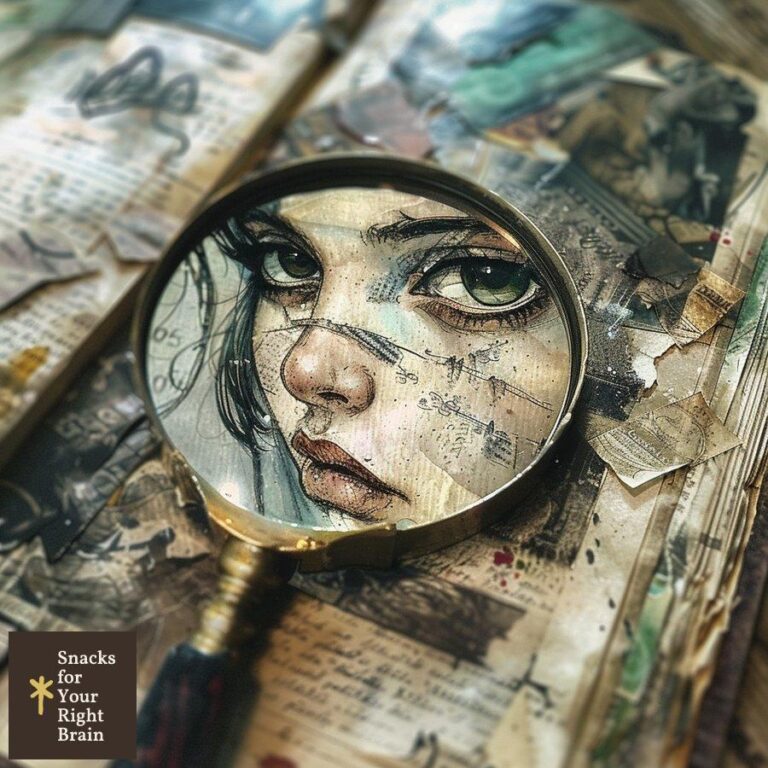What Are Some Morally Ambiguous Characters
What defines a morally ambiguous character?
Morally ambiguous characters occupy a unique space in storytelling, often blurring the lines between good and evil. These characters are not simply heroes or villains; they embody a spectrum of moral complexities that reflect the intricacies of human nature.
Characteristics of Morally Ambiguous Characters
-
Complex Motivations: These characters often have motivations that are not purely altruistic or malevolent. Their actions can stem from a mix of personal desires, societal pressures, or ethical dilemmas that complicate their moral standing.
-
Internal Conflict: Morally ambiguous characters frequently grapple with their choices, experiencing guilt, regret, or justification for their actions. This internal struggle makes them relatable and compelling.
-
Unpredictability: Their decisions can be surprising, leading to outcomes that challenge the audience’s expectations. This unpredictability keeps readers and viewers engaged, as they are often left questioning the character’s true nature.
-
Consequences of Actions: These characters typically face the repercussions of their choices, which can lead to growth or further moral decline. This element adds depth to their narrative arc, allowing for exploration of themes such as redemption and downfall.
Examples of Morally Ambiguous Characters
-
Walter White from “Breaking Bad” starts as a sympathetic character but gradually transforms into a ruthless drug lord, raising questions about morality and the consequences of his choices.
-
Severus Snape from the “Harry Potter” series is portrayed as a villain but reveals layers of complexity that challenge the perception of good and evil.
-
Tyrion Lannister from “Game of Thrones” navigates a treacherous political landscape, often making morally questionable decisions for the sake of survival.
These characters resonate with audiences because they reflect the complexities of real life, where individuals often find themselves in morally gray situations.
How do morally ambiguous characters impact storytelling?
Morally ambiguous characters significantly enhance storytelling by introducing complexity and depth to narratives. Their presence challenges traditional notions of good and evil, prompting audiences to engage with ethical dilemmas and philosophical questions.
Enhancing Narrative Depth
-
Complex Themes: The inclusion of morally ambiguous characters allows writers to explore themes such as redemption, guilt, and the nature of evil. This exploration often leads to richer, more nuanced stories that resonate with audiences on multiple levels.
-
Character Development: These characters often undergo significant growth or decline, providing a dynamic element to the narrative. Their journeys can serve as cautionary tales or inspire empathy, depending on the direction of their arcs.
-
Ethical Dilemmas: Morally ambiguous characters often face situations where there are no clear right or wrong choices. This creates tension and encourages readers to ponder their own moral beliefs, fostering a deeper connection to the story.
Engaging Audiences
-
Emotional Investment: Audiences are drawn to characters who reflect their own complexities. Morally ambiguous characters evoke a range of emotions, from sympathy to disdain, making the viewing or reading experience more engaging.
-
Discussion and Debate: These characters often spark conversations about morality and ethics, encouraging audiences to reflect on their own values. This discourse can enhance the overall impact of the story, making it memorable and thought-provoking.
In summary, morally ambiguous characters enrich storytelling by adding layers of complexity, challenging audiences to confront their own moral beliefs, and fostering deeper emotional connections.
Who are some classic morally ambiguous characters in literature?

Classic literature is replete with morally ambiguous characters who challenge readers’ perceptions of right and wrong. These characters often embody the complexities of human nature, making them enduring figures in literary history.
Notable Examples
-
Dr. Jekyll and Mr. Hyde from Robert Louis Stevenson’s Strange Case of Dr. Jekyll and Mr. Hyde exemplify the duality of human nature. Dr. Jekyll’s desire to separate his good and evil sides leads to the creation of the malevolent Mr. Hyde, raising questions about the nature of morality and identity.
-
Jay Gatsby from F. Scott Fitzgerald’s The Great Gatsby is a self-made millionaire whose pursuit of love and the American Dream leads him to engage in illegal activities. His tragic flaw—an obsession with a past love—adds depth to his character and challenges readers to consider the cost of ambition.
-
Hester Prynne from Nathaniel Hawthorne’s The Scarlet Letter faces societal condemnation for her adultery. Her journey explores themes of sin, redemption, and the complexities of morality within a rigid societal framework.
-
Macbeth from Shakespeare’s Macbeth is a noble warrior whose ambition drives him to commit regicide. His moral decline illustrates the corrupting influence of power and the consequences of unchecked ambition.
-
Huckleberry Finn from Mark Twain’s Adventures of Huckleberry Finn grapples with societal norms and his own conscience as he helps Jim, an escaped slave. Huck’s internal conflict highlights the moral complexities surrounding race and friendship in a prejudiced society.
These characters remain relevant today, serving as reminders of the intricate nature of morality and the human experience.
Which film characters exemplify moral ambiguity?
Film has a rich tradition of morally ambiguous characters who captivate audiences with their complexity and depth. These characters often challenge traditional hero-villain dichotomies, making for compelling narratives.
Iconic Film Characters
![]()
-
Tony Soprano from The Sopranos is a mob boss who struggles with the demands of his criminal lifestyle and his family responsibilities. His internal conflicts and moral justifications make him a quintessential antihero.
-
Walter White from Breaking Bad transforms from a mild-mannered chemistry teacher into a drug kingpin. His descent into moral ambiguity raises questions about the lengths one will go to for family and the consequences of one’s choices.
-
The Joker from The Dark Knight embodies chaos and anarchy. His motivations challenge the audience to consider the nature of evil and the societal factors that contribute to it.
-
Michael Corleone from The Godfather starts as a reluctant participant in the family business but gradually embraces his role as a ruthless leader. His transformation illustrates the moral complexities of loyalty, power, and family.
-
Amy Dunne from Gone Girl is a master manipulator whose actions blur the lines between victim and villain. Her character challenges societal perceptions of gender and morality, making her a compelling figure in contemporary cinema.
These characters exemplify moral ambiguity, inviting audiences to engage with complex ethical dilemmas and reflect on their own moral beliefs.
How do antiheroes in television push moral boundaries?
Antiheroes have become a prominent fixture in contemporary television, often pushing the boundaries of morality and challenging traditional storytelling conventions. These characters are defined by their flawed nature, complex motivations, and morally ambiguous actions.
Defining Characteristics of Antiheroes

-
Flawed Nature: Antiheroes often possess significant moral failings, making them relatable and human. Their imperfections resonate with audiences, who may see reflections of their own struggles.
-
Complex Motivations: Unlike traditional heroes, antiheroes are driven by self-interest, revenge, or personal desires. This complexity adds depth to their character arcs and allows for exploration of ethical dilemmas.
-
Moral Ambiguity: Antiheroes frequently operate in gray areas, making choices that challenge conventional notions of right and wrong. Their actions often lead to unintended consequences, prompting viewers to question their own moral beliefs.
Impact on Storytelling
-
Challenging Norms: Antiheroes disrupt traditional narratives by subverting expectations. Their journeys often defy the classic hero’s arc, leading to unpredictable outcomes that keep audiences engaged.
-
Exploring Themes: The presence of antiheroes allows for exploration of complex themes such as redemption, guilt, and the nature of evil. These themes resonate deeply with audiences, prompting reflection on the human experience.
-
Emotional Complexity: Antiheroes evoke a range of emotions, from sympathy to disdain. This emotional complexity enhances viewer engagement, as audiences grapple with their feelings toward these characters.
In summary, antiheroes in television push moral boundaries by challenging traditional storytelling conventions, exploring complex themes, and evoking emotional responses from audiences.
What makes comic book characters morally gray?
Comic book characters often inhabit a world filled with moral ambiguity, where heroes and villains are not easily distinguishable. This complexity adds depth to their narratives and resonates with readers on multiple levels.
Characteristics of Morally Gray Comic Book Characters
-
Duality of Nature: Many comic book characters embody both heroic and villainous traits. For example, characters like Deadpool and Catwoman operate in morally gray areas, often blurring the lines between good and evil.
-
Complex Backstories: The motivations of morally gray characters are often rooted in their past experiences, traumas, or societal influences. This complexity adds depth to their character development and makes them relatable to readers.
-
Ambiguous Morality: Comic book characters frequently face ethical dilemmas that challenge their moral compass. Their decisions can lead to unintended consequences, prompting readers to question the nature of heroism and villainy.
Notable Examples
-
Deadpool: Known for his irreverent humor and violent methods, Deadpool operates outside traditional moral boundaries. His complex motivations and chaotic nature make him a compelling antihero.
-
Harley Quinn: Initially introduced as a villain, Harley Quinn has evolved into a multifaceted character who navigates her own moral complexities. Her journey reflects themes of empowerment and self-discovery.
-
Magneto: Often portrayed as a villain, Magneto’s actions are driven by a desire to protect mutantkind. His motivations challenge readers to consider the moral implications of his choices.
Comic book characters exemplify moral ambiguity, inviting readers to engage with complex ethical dilemmas and reflect on the nature of good and evil.
How can writers create compelling morally ambiguous characters?
Crafting morally ambiguous characters requires careful consideration of their motivations, actions, and the consequences of their choices. Writers can employ several strategies to create depth and complexity in these characters.
Strategies for Writing Morally Ambiguous Characters
-
Understand Their Motivations: A well-developed character should have clear motivations that drive their actions. Writers should explore the underlying reasons for their choices, whether they stem from personal desires, societal pressures, or ethical dilemmas.
-
Focus on Relationships: Relationships play a crucial role in shaping a character’s moral compass. Writers should consider how interactions with other characters influence their decisions and contribute to their internal conflicts.
-
Embrace Complexity: Morally ambiguous characters should embody a mix of positive and negative traits. Writers can create depth by allowing characters to make mistakes, experience growth, or face the consequences of their actions.
-
Challenge Moral Norms: Writers should place their characters in situations where traditional moral boundaries are blurred. This allows for exploration of ethical dilemmas and encourages readers to grapple with their own beliefs.
-
Show Consequences: Characters should face the repercussions of their actions, whether beneficial or detrimental. This element adds depth to their narrative arc and reinforces the complexities of moral ambiguity.
By employing these strategies, writers can create compelling morally ambiguous characters that resonate with readers and challenge conventional notions of good and evil.
Why do audiences connect with morally ambiguous characters?
Audiences are often drawn to morally ambiguous characters due to their complexity and relatability. These characters reflect the intricacies of human nature, prompting viewers to engage with ethical dilemmas and question their own moral beliefs.
Reasons for Audience Connection
-
Authenticity: Morally ambiguous characters embody the complexities of real life, where individuals often find themselves in gray areas. This authenticity resonates with audiences, who may see reflections of their own struggles and dilemmas.
-
Emotional Engagement: The internal conflicts and moral struggles of these characters evoke a range of emotions, from empathy to disdain. This emotional engagement enhances the viewing or reading experience, making it more impactful.
-
Thought-Provoking Themes: Morally ambiguous characters often challenge traditional notions of good and evil, prompting audiences to reflect on their own values. This exploration of complex themes adds depth to the narrative and encourages meaningful discussions.
-
Unpredictability: The unpredictable nature of morally ambiguous characters keeps audiences engaged. Their decisions can lead to surprising outcomes, creating tension and intrigue that captivates viewers.
In summary, audiences connect with morally ambiguous characters due to their authenticity, emotional complexity, thought-provoking themes, and unpredictability.
What controversies surround morally ambiguous characters in media?
Morally ambiguous characters often spark controversy in media, as their actions and motivations challenge traditional moral frameworks. This complexity can lead to debates about ethics, representation, and the impact of these characters on audiences.
Controversial Aspects
-
Ethical Implications: The portrayal of morally ambiguous characters raises questions about the ethics of their actions. Audiences may grapple with the implications of glorifying or vilifying these characters, leading to discussions about morality in storytelling.
-
Representation and Stereotypes: The depiction of morally ambiguous characters can sometimes reinforce harmful stereotypes or perpetuate negative portrayals of certain groups. This aspect raises concerns about representation and the responsibility of creators in shaping narratives.
-
Impact on Audiences: The influence of morally ambiguous characters on audience perceptions of morality is a topic of debate. Some argue that these characters can desensitize viewers to ethical dilemmas, while others believe they encourage critical thinking and reflection.
Examples of Controversial Characters
-
Tony Soprano: The antihero of The Sopranos has sparked discussions about the glorification of criminal behavior and the ethical implications of rooting for a morally flawed character.
-
Walter White: The transformation of Walter White from a sympathetic character to a ruthless drug lord raises questions about the moral implications of his choices and the impact of his actions on those around him.
-
The Joker: The portrayal of the Joker as a chaotic figure challenges traditional notions of morality, leading to debates about the ethics of depicting violence and anarchy in media.
In summary, the controversies surrounding morally ambiguous characters in media highlight the complexities of ethics, representation, and audience impact, prompting important discussions about the role of morality in storytelling.
How do morally ambiguous characters challenge readers’ perspectives?
Morally ambiguous characters serve as catalysts for challenging readers’ perspectives on morality and ethics. Their complexity prompts audiences to engage with difficult questions and reflect on their own beliefs.
Challenging Perspectives
-
Ethical Dilemmas: Morally ambiguous characters often face situations where there are no clear right or wrong choices. This complexity encourages readers to grapple with their own moral beliefs and consider the nuances of ethical decision-making.
-
Reflection on Human Nature: These characters reflect the intricacies of human nature, prompting readers to confront their own flaws and complexities. This exploration fosters empathy and understanding of the human experience.
-
Questioning Norms: Morally ambiguous characters challenge traditional notions of good and evil, inviting readers to reconsider societal norms and expectations. This questioning can lead to a deeper understanding of morality and its complexities.
In conclusion, morally ambiguous characters play a vital role in literature and media, enriching narratives and prompting audiences to engage with complex ethical dilemmas. Their complexity and relatability resonate with readers, fostering meaningful discussions about morality and the human experience.






